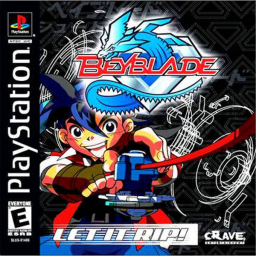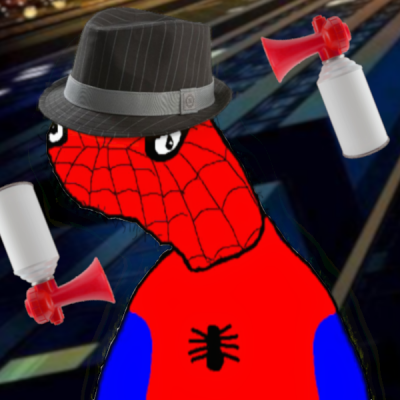[This is a Work In Progress, so expect more info and better formatting in the future]
Hello there, fellow runner!
Wanna run Beyblade: Let it Rip? Wanna be one of the cool kids and use RNG Manipulation to kick the game's butt? Then fear not, because we got you covered!
The aim of this guide is to help new runners understand everything they need to take into account when mapping out a new RNG Manipulation route for the game. Now, I would like to stress that it's not mandatory for you to use RNG Manipulation to submit runs for this game. However, should you desire to use this method, you can use this as a guideline on how to tackle the task.
Without further ado, let's get into it!
Learning about RNG
Stuff that affects RNG
- BIOS version of choice.
- Version of the game of choice.
- Beyblade of choice (given that different parts on your beyblade will ultimately end in different results during battles).
- Inputs during fights (and the timing of said inputs).
- Duration of your hold of said inputs during fights.
- Healing/Repairing your beyblade in between matches.
- [NEEDS TESTING] Inventory, Points, Blader LVL/XP and Bit Beast LVL/XP. These will only come into play for runs in the NG+ category, since for Any% these stats are always the same (starting from a fresh file).
Stuff that doesn't affect RNG
- Name of Blader.
- Gender of Blader.
- Timing of inputs in between matches and on menues.
- Console/Emulator of choice (except in cases of lag vs. no lag, which might end up with different runs).
Opponents for the tournament
All the opponents for each match of the tournament are defined as soon as you start the tournament, meaning your inputs during the tournament will not influence them in any way.
Selecting a BIOS
- As stated above, most of the stuff you can do during character creation doesn't affect RNG, and thus shouldn't affect the lineup of opponents you'll get for the tournament. With that in mind, as long as you don't change your bios, you should expect your opponents to stay consistently the same.
- When changing from one BIOS to another, you should expect to get different RNG for fights (meaning, an RNG route you used on one BIOS generally shouldn't work on another).
- When changing from one BIOS to another, you'll get different opponents than before for most of the time (though in some cases they may stay the same).
With these three points in mind, there's currently no advantage for using one particular BIOS over another, so you can keep testing as many as you wish until you find one that has the opponents you want or that simply you are comfortable with:
- SCPH-xxx0 = NTSC-J (Japan)
- SCPH-xxx1 = NTSC-U/C (USA, Canada, Brazil and some of South America)
- SCPH-xxx2 = PAL (UK, Spain, France, most of Europe and Australia)
- SCPH-xxx3 = NTSC-J (Asia)
Now, some Playstation models' BIOS share the same RNG values as others (meaning you can use the exact same RNG Manipulation route between them), while some only share the same opponent lineup for a New Game (meaning you will get the same opponents, but can't use the same routes between them).
These have all been tested using the NTSC-U version of the game, so the values you are about to see might not match with the other versions of the game.
BIOS grouped by exact same RNG values:
- BIOS model M1 R1: SPM of the opponent at the beginning of Match 1, Round 1
- SCPH-1000 M1 R1: 5605 SPM
- SCPH-1001 M1 R1: 6205 SPM
- SCPH-1002 // SCPH-3500 // SCPH-5000 // SCPH-5500 // SCPH-5501 // SCPH-7003 M1 R1: 6055 SPM
- SCPH-3000 M1 R1: 4105 SPM
- SCPH-5502 // SCPH-5552 M1 R1: 6205 SPM
- SCPH-7000 M1 R1: 5105 SPM
- SCPH-7001 // SCPH-7002 // SCPH-9002 M1 R1: 4405 SPM
- SCPH-100 M1 R1: 6055 SPM
- SCPH-101 // SCPH-102B // SCPH-102C M1 R1: 4705 SPM
- SCPH-102A M1 R1: 4855 SPM
BIOS grouped by shared opponents (but not necessarily same RNG):
- SCPH-1000 // SCPH-3000 Opponents: A, C, B, Michael, Kai, Robert, Tyson
- SCPH-1001 // SCPH-5502 // SCPH-5552 // SCPH-7000 // SCPH-7001 // SCPH-7002 // SCPH-9002 // SCPH-101 // SCPH-102B // SCPH-102C Opponents: A, B, C, Max, Ray, Tala, Kai
- SCPH-1002 // SCPH-3500 // SCPH-5000 // SCPH-5500 // SCPH-5501 // SCPH-7003 Opponents: A, B, C, Max, Michael, Lee, Tyson
- SCPH-100 // SCPH-102A Opponents: A, C, B, Tala, Ray, Kai, Robert
Selecting a version of the game
There are 3 versions of the game: PAL, NTSC-U and NTSC-J.
Now, as far as I know, the only difference between them is that, while PAL runs at 50hz, NTSC-U and NTSC-J both run at 60hz, leaving the PAL version at a slight disadvantage. Aside from this difference, the gameplay stays largely the same, so feel free to choose whichever you like.
Mapping the route
Now that we have our BIOS and version of the game selected and that we know what makes RNG change and what doesn't, we can start mapping out our own route. In short, what you'll need to take note of for your route is:
- BIOS in use
- Version of the game in use (NTSC-U/NTSC-J/PAL)
- Beyblade of choice
- Whether to repair your beyblade or not at the end of the match
- For each round of each match:
- Spin Charge during Launch (Should you launch at full power? Should you let it go at minimum power? Or something in between?)
- Directional input being held during the round (Up, Down, Left, Right, Diagonals, or no input at all)
- When to start holding
- When to release the hold
Example of how your route should look like on paper: ** https://pastebin.com/V9By1teN **
Suggestions
These are not necessary to make your route, but they are just tips I found useful for crafting one.
A. I personally recommend using the D-pad for the directional inputs, given that the sticks are a bit more unreliable for these setups.
B. When deciding when to start and when to release the hold of directional inputs for a round, I usually found it easier to define a visual cue that I'd use for every single match for each task that'd let me be consistent with my inputs all the time. In my case, I chose the very first frame that launch begins to start holding the directional input, and the very first frame that the background changes (after the opponent leaves the ring). Of course, this is just an example and you can pick your own markers for this.
C. Be wary of the use of Frame Skipping and Save States on emulator when mapping your route. More often than not, when using said tools I found myself working on a save state that didn't reflect the state I'd be in during a real run, thus making any routing I did over that state effectively worthless. That's not to say you can't use them correctly, just make extra sure that by using Frame Skipping you are not accidentally holding or letting go of your inputs out of order and you'll be fine.
Special Thanks
Big thanks to @Raikou and @ryuugami74 for helping to find all this information!






